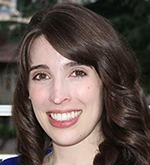
Immunotherapy Agents Used in NSCLC: Principles for Managing Adverse Events
Last Updated: Wednesday, November 11, 2020
Discover the latest in the field of non–small cell lung cancer (NSCLC) immunotherapy from two advanced practitioner experts, Elizabeth Waxman, RN, MSN, ANP-BC, AOCN, and Whitney Lewis, PharmD, BCOP, both of The University of Texas MD Anderson Cancer Center. Learn from their conversation focused on the differences between PD-L1 and CTLA-4 inhibitors, associated side effects and immune-related adverse events, and the role of PD-L1 expression in NSCLC treatment.
Meet the faculty

Elizabeth Waxman
RN, MSN, ANP-BC, AOCN
The University of Texas MD Anderson Cancer Center
Ms. Waxman is a nurse practitioner who has worked in the Outpatient Thoracic Medicine Oncology Clinic at MD Anderson for more than 20 years. She has coauthored several publications and delivered presentations on lung cancer at numerous society conferences.

Whitney Lewis
PharmD, BCOP
The University of Texas MD Anderson Cancer Center
Dr. Lewis is a clinical pharmacy specialist. She has presented on lung cancer pharmacology at numerous regional and national conferences, and has served as co-author on several publications and research presentations.
References
- Reck M, Rodriguez-Abreu D, Robinson AG, et al. Pembrolizumab versus chemotherapy for PD-L1-positive non-small-cell lung cancer. N Engl J Med. 2016;375:1823-1833.
- Hellmann MD, Paz-Ares L, Caro RB, et al. Nivolumab plus ipilimumab in advanced non-small-cell lung cancer. N Engl J Med. 2019;381:2020-2031.
